9 Best Herbal Teas For Throat Congestion
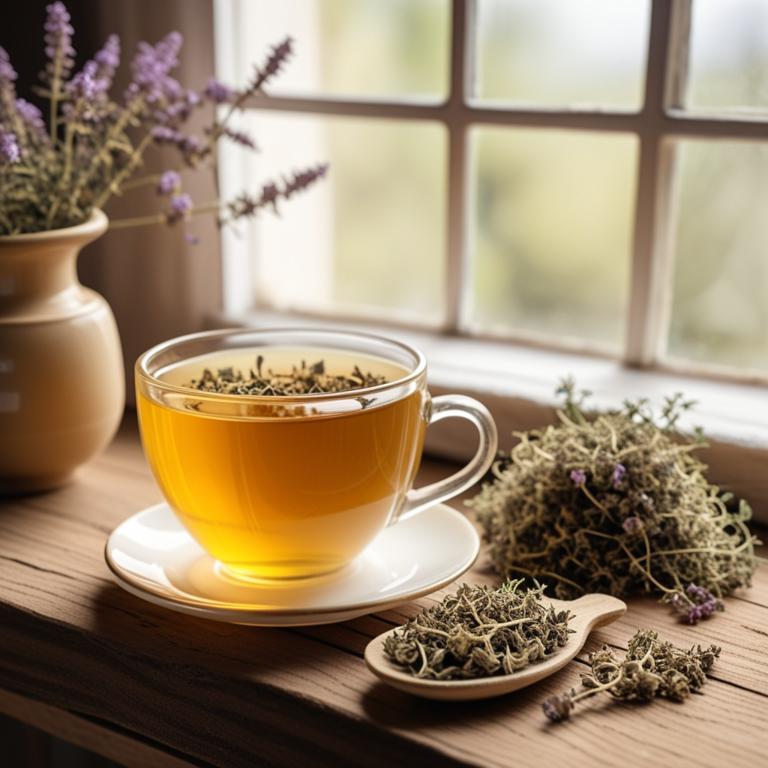
Herbal teas for Throat congestion are a type of tea made from various herbs and plants that help to alleviate symptoms of throat congestion, such as soreness, inflammation, and difficulty swallowing.
These teas work by reducing inflammation, soothing the throat, and loosening mucus, allowing for easier breathing and relief from discomfort.
Examples of herbal teas that can treat throat congestion include Slippery Elm, which forms a protective barrier on the mucous membranes, and Thyme, which has antibacterial properties that help combat infection; Ginger, which has anti-inflammatory properties that reduce swelling and pain; Peppermint, which helps to loosen mucus and ease congestion; Echinacea, which boosts the immune system to fight off underlying infections; and Licorice Root, which soothes and calms the throat.
By incorporating these herbal teas into their routine, individuals can find natural relief from throat congestion and promote overall health and well-being.
Related Study
According to "Journal of alternative and complementary medicine (New York, N.Y.)", teas for throat congestion, such as Throat Coat, have been shown to provide a rapid and temporary relief of sore throat pain in patients with pharyngitis, with significant reductions in pain intensity and improvements in total pain relief compared to a placebo.
Below there's a list of the 9 best herbal teas for throat congestion.
Table of Contents
Also, you may be interested in...
Today Free Bonus!
The Ultimate Herb Drying Checklist
(For Long-Lasting Powerful Medicinal Effect)
How to easily dry herbs that don't mold and that keep their strong medicinal power for more than 1 year.
1. Eucalyptus globulus teas
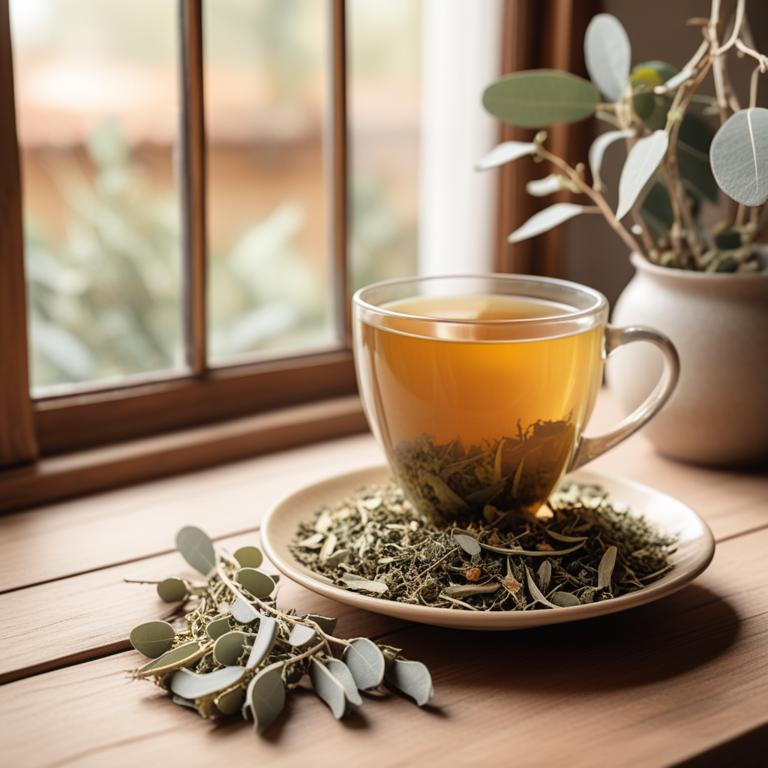
Eucalyptus globulus teas have been used to treat throat congestion due to its decongestant and anti-inflammatory properties.
This herbal preparation helps to treat throat congestion by reducing inflammation and congestion in the nasal passages and throat, making it easier to breathe.
The bioactive constituents of Eucalyptus globulus teas, including eucalyptol and flavonoids, help to reduce inflammation and combat bacterial and viral infections that can cause throat congestion.
Regular consumption of Eucalyptus globulus teas can provide relief from throat congestion and promote overall respiratory health.
Related Study
According to "African journal of traditional, complementary, and alternative medicines : AJTCAM", Eucalyptus globulus teas, which is one of the species documented in the study, may be used to help alleviate throat congestion, although the study primarily focused on its use in treating asthma.
Recipe:
- Gather 2 cups of water and 1 tablespoon of dried Eucalyptus globulus leaves.
- Bring the water to a boil in a saucepan.
- Reduce heat and add the dried Eucalyptus globulus leaves. Let it steep for 5-7 minutes.
- Strain the tea into a cup using a fine-mesh sieve or cheesecloth to remove the leaves.
- Drink the tea while it's still warm to help relieve throat congestion.
Eucalyptus globulus teas can be beneficial in treating throat congestion, but possible side effects include stomach upset, nausea, and diarrhea, especially when consumed in excess or for prolonged periods.
To use Eucalyptus globulus teas safely, it is recommended to start with small amounts, be cautious when consuming it with other medications or supplements, and avoid using it for extended periods without giving the body time to rest and recover.
Eucalyptus Globulus Tea on Amazon
Jovvily Eucalyptus Leaves - 1lb - Dried - Cut & Sifted - Herbal Tea
Disclaimer: We earn a commission if you click this link and make a purchase at no additional cost to you.
2. Echinacea purpurea teas

Echinacea purpurea teas have been a popular herbal remedy for treating throat congestion due to their anti-inflammatory and antimicrobial properties.
The bioactive constituents, including alkylamides and polyphenols, help to reduce inflammation and alleviate symptoms of the common cold and flu by suppressing the production of pro-inflammatory enzymes.
By stimulating the immune system and increasing the production of white blood cells, Echinacea purpurea teas aid in fighting off infections and promoting overall recovery.
The benefits of this herbal preparation include reduced severity and duration of symptoms, improved respiratory function, and enhanced immune system response, making it a natural and effective treatment for throat congestion.
Related Study
According to "Annals of allergy, asthma & immunology : official publication of the American College of Allergy, Asthma, & Immunology", Echinacea purpurea teas for throat congestion may provide relief from symptoms of the "common cold" or upper respiratory tract allergies, but there is a risk of exacerbating allergies and asthma.
Recipe:
- Gather 1 cup of fresh or dried Echinacea purpurea flowers and 1 cup of boiling water.
- Measure 1 tablespoon of Echinacea flowers per cup of water. If using dried flowers, use less: 1/2 tablespoon.
- Place Echinacea flowers in a heat-resistant cup. Pour boiling water over the flowers.
- Steep for 5-7 minutes. Strain the tea with a fine-mesh sieve or cheesecloth.
- Drink 1-2 cups of the tea, 2-3 times a day, to help soothe throat congestion.
Echinacea purpurea teas can be used to treat throat congestion, but they may cause side effects such as allergic reactions, such as hives or itching, as well as stomach upset, nausea, and diarrhea in some individuals.
To use Echinacea purpurea teas safely, it is recommended to start with a small dose and gradually increase as needed, and to be cautious when consuming it if you have a history of allergies or sensitive stomach, and to avoid taking it with other medications, especially blood thinners and diabetes medications.
Echinacea Purpurea Tea on Amazon
BLUE TEA - Chamomile Tea - Butterfly Pea Flower -18 Count - Pyramid Tea Bag | DETOX TEA | Caffeine Free - Flower Based - Vegan - Non-Bitter - Natural Ingredients | Tin Packaging
Disclaimer: We earn a commission if you click this link and make a purchase at no additional cost to you.
3. Zingiber officinale teas

Zingiber officinale teas have been traditionally used to treat throat congestion, a common ailment characterized by inflammation and mucus buildup in the throat.
The anti-inflammatory and expectorant properties of Zingiber officinale teas help to reduce swelling and loosen mucus, making it easier to breathe and swallow.
The bioactive constituents of Zingiber officinale teas, including gingerols and shogaols, possess potent anti-inflammatory and antimicrobial properties that help to combat the underlying causes of throat congestion.
Regular consumption of Zingiber officinale teas has been shown to provide relief from throat congestion, reduce the risk of complications, and promote overall respiratory health.
Related Study
According to the Journal of alternative and complementary medicine (New York, N.Y.), Zingiber officinale teas, as part of the Throat Coat formulation, significantly reduced the intensity of throat pain when swallowing and provided rapid, temporary relief of sore throat pain in patients with pharyngitis.
Recipe:
- Get 1 tablespoon of dried Zingiber officinale root.
- Boil 1 cup of water in a kettle or pot.
- Add the dried Zingiber officinale root to the boiling water.
- Reduce heat and let it simmer for 5 minutes.
- Strain the tea and drink it while it's still warm.
Zingiber officinale teas can be an effective remedy for throat congestion, but its use may cause mild side effects such as stomach upset, nausea, and diarrhea in some individuals, especially when consumed in large quantities or for extended periods.
To minimize potential side effects, it is recommended to drink Zingiber officinale teas in moderation, avoid taking it on an empty stomach, and consider reducing the frequency of consumption if you experience any discomfort or allergic reactions.
Zingiber Officinale Tea on Amazon
FGO Organic Ginger Tea, 100 Count, Eco-Conscious Tea Bags, Caffeine Free, Packaging May Vary (Pack of 1)
Disclaimer: We earn a commission if you click this link and make a purchase at no additional cost to you.
4. Thymus vulgaris teas
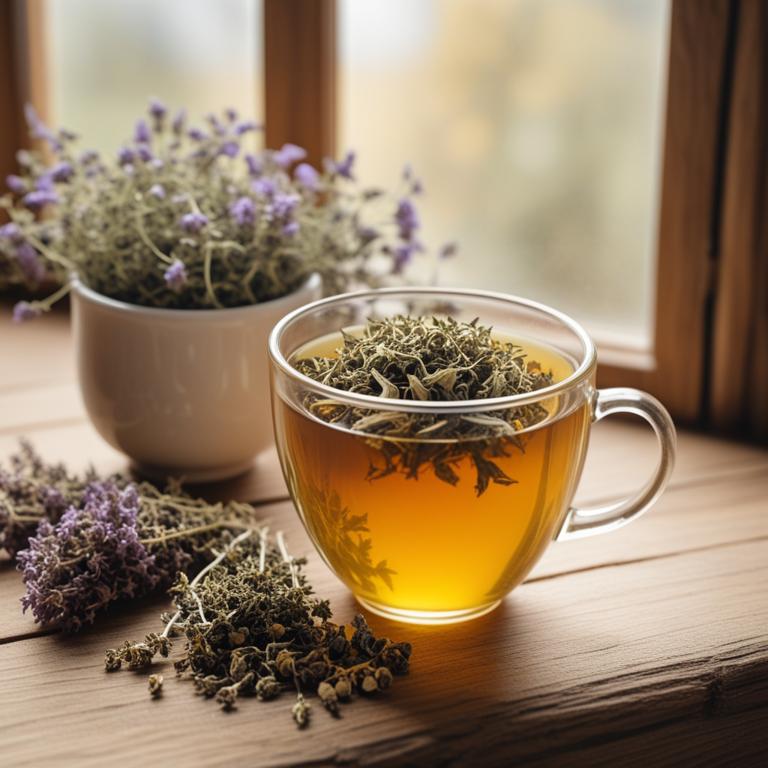
Thymus vulgaris teas, also known as thyme tea, have been used for centuries to treat throat congestion due to their decongestant, anti-inflammatory, and antimicrobial properties.
The bioactive constituents of thyme tea, including thymol and carvacrol, help to break down and clear mucus from the respiratory tract, reducing congestion and making it easier to breathe.
By reducing inflammation and killing bacteria that can exacerbate throat congestion, thymus vulgaris teas help to alleviate symptoms such as coughing, sore throats, and difficulty swallowing.
The benefits of thymus vulgaris teas in treating throat congestion include rapid relief from symptoms, improved respiratory function, and a reduced risk of complications from prolonged inflammation and infection.
Related Study
According to "Wiadomosci lekarskie (Warsaw, Poland : 1960)", Thymus vulgaris teas for throat congestion may be effective in alleviating cough and dyspnea due to the spasmolytic, antimicrobial, anti-inflammatory, immunomodulatory, and antioxidant properties of thyme, particularly thymol.
Recipe:
- Gather 1 cup of boiling water and 1 teaspoon of dried Thymus vulgaris (thyme) leaves.
- Pour the boiling water over the thyme leaves in a cup.
- Let it steep for 5-7 minutes to allow the flavors to mix.
- Strain the thyme leaves from the water with a spoon or a tea strainer.
- Drink the thyme tea warm, 2-3 times a day to help ease throat congestion.
Thymus vulgaris teas can be effective in treating throat congestion, but possible side effects may include allergic reactions, such as skin rash or itching, and interactions with certain medications, particularly those affecting blood pressure or blood clotting.
When using Thymus vulgaris teas to treat throat congestion, it is essential to take precautions, such as starting with small amounts to gauge tolerance, avoiding use in pregnant or breastfeeding women, and monitoring for signs of excessive sedation or dizziness.
Thymus Vulgaris Tea on Amazon
Buddha Teas Organic Thyme Leaf Tea - OU Kosher, USDA Organic, CCOF Organic, 18 Bleach-Free Tea Bags
Disclaimer: We earn a commission if you click this link and make a purchase at no additional cost to you.
5. Glycyrrhiza glabra teas

Glycyrrhiza glabra teas have been traditionally used to treat throat congestion due to their anti-inflammatory and expectorant properties, which help to reduce swelling and loosen mucus.
The bioactive constituents of Glycyrrhiza glabra, including glycyrrhizin, flavonoids, and phenolic acids, contribute to its therapeutic effects by suppressing the production of pro-inflammatory cytokines and improving mucociliary clearance.
The use of Glycyrrhiza glabra teas has been found to provide relief from throat congestion by reducing coughing and promoting easy mucus expulsion, ultimately leading to a faster recovery.
Regular consumption of Glycyrrhiza glabra teas is also beneficial in preventing future episodes of throat congestion by strengthening the immune system and maintaining respiratory health.
Related Study
According to "Mini reviews in medicinal chemistry", Glycyrrhiza glabra teas for throat congestion have been found to have anti-inflammatory activity and inhibit virus growth, potentially offering relief from viral respiratory infections such as sinusitis and sore throats.
Recipe:
- Get 1 cup of boiling water and 1 teaspoon of dried Glycyrrhiza glabra root.
- Add 1 teaspoon of dried Glycyrrhiza glabra root to a tea infuser or a heat-resistant cup.
- Pour the boiling water over the root and let it steep for 5-7 minutes.
- Strain the tea into another cup and add honey to taste, if desired.
- Drink the tea 2-3 times a day to help soothe throat congestion.
Glycyrrhiza glabra teas can be used to treat throat congestion, but possible side effects include water and electrolyte retention, which may lead to swelling and high blood pressure, as well as increased risk of potassium deficiency.
To use these teas safely, it is essential to consume them in moderation and to be aware of the potential interactions with other medications, as well as to stay hydrated and monitor blood pressure levels.
Glycyrrhiza Glabra Tea on Amazon
Pukka Herbal Teas Licorice and Cinnamon - 20 Bags, 20 Count
Disclaimer: We earn a commission if you click this link and make a purchase at no additional cost to you.
6. Sambucus nigra teas
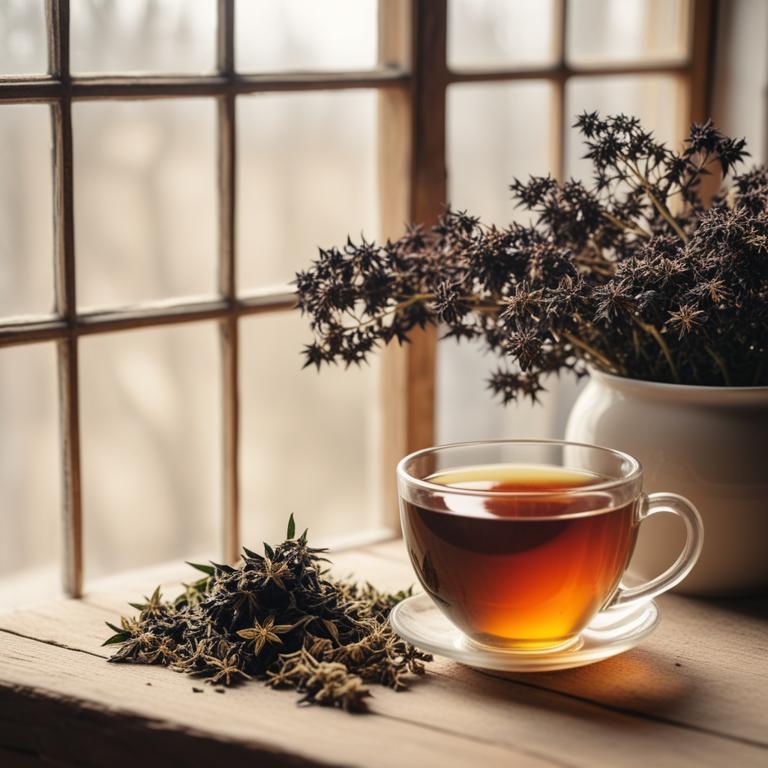
Sambucus nigra teas, derived from the flowers of the elder tree, have been traditionally used to treat throat congestion and coughs.
The properties of this herbal preparation, including its expectorant and anti-inflammatory properties, help to loosen and clear mucus from the respiratory tract, reducing congestion and discomfort.
The bioactive constituents, such as flavonoids, phenolic acids, and sambunigrin, have been found to have antimicrobial and antiviral properties, which help to combat infections that can cause throat congestion.
The benefits of Sambucus nigra teas in treating throat congestion include reducing inflammation, relieving coughs, and promoting a faster recovery, making it a popular natural remedy for respiratory issues.
Related Study
According to "Phytotherapy research : PTR", Sambucus nigra teas for throat congestion have been found to have immunomodulatory, immunostimulatory, and anti-inflammatory effects, which can help alleviate symptoms of respiratory viral infections.
Recipe:
- Gather Sambucus nigra flowers, 1 cup of boiling water, and a tea strainer.
- Measure 2-3 tablespoons of Sambucus nigra flowers into the tea strainer.
- Pour boiling water over the flowers and let it steep for 5-7 minutes.
- Strain the tea into a cup and discard the flowers.
- Add honey to taste, if needed, and drink the tea to help relieve throat congestion.
Sambucus nigra teas can provide relief from throat congestion, but possible side effects may include drowsiness, stomach upset, and allergic reactions, particularly in individuals with pre-existing conditions or those taking certain medications.
To use Sambucus nigra teas safely, take them in moderation, avoid mixing with other medications, and be cautious if you have a history of allergies or stomach issues, as this may exacerbate the condition.
Sambucus Nigra Tea on Amazon
Elderberry Turmeric Ginger Tea - Made in USA
Disclaimer: We earn a commission if you click this link and make a purchase at no additional cost to you.
7. Mentha x piperita teas
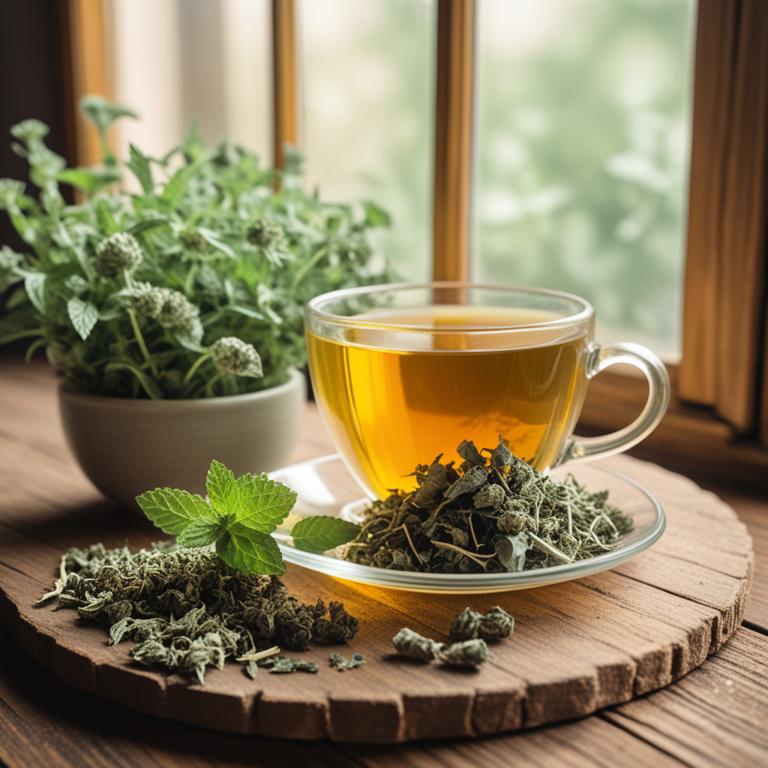
Mentha x piperita teas, also known as peppermint teas, have been traditionally used to treat throat congestion by providing relief from coughs and sore throats.
This herbal preparation contains compounds such as menthol and menthone, which help to thin mucus and reduce inflammation in the throat, making it easier to breathe and swallow.
The bioactive constituents of Mentha x piperita teas, including rosmarinic acid and limonene, exhibit antioxidant and anti-inflammatory properties that help to soothe and calm the throat, alleviating congestion and discomfort.
The benefits of using Mentha x piperita teas to treat throat congestion include natural and non-addictive relief, as well as the potential to reduce the severity and duration of symptoms, promoting overall respiratory health and well-being.
Related Study
According to "Journal of alternative and complementary medicine (New York, N.Y.)", Mentha x piperita teas, which are a key component of Throat Coat, have been found to significantly reduce the intensity of throat pain when swallowing in patients with acute pharyngitis, providing a rapid, temporary relief of sore throat pain.
Recipe:
- Gather 1 cup of water, 2 tablespoons of fresh mint leaves (Mentha x piperita), and 1 tablespoon of honey.
- Wash the fresh mint leaves with clean water and chop them finely.
- Boil the cup of water in a pot and add the chopped mint leaves.
- Let the mixture steep for 5-7 minutes, then strain it into a cup.
- Add the tablespoon of honey and mix well before serving.
Mentha x piperita teas can be an effective remedy for treating throat congestion, but possible side effects include mild stomach upset, allergic reactions, and interactions with certain medications such as blood thinners and high blood pressure medications.
Precautions to take when using Mentha x piperita teas include monitoring for signs of allergic reactions, such as hives or difficulty breathing, and avoiding consumption in large quantities, as it may exacerbate stomach issues.
8. Lavandula angustifolia teas

Lavandula angustifolia teas, also known as English lavender tea, have been traditionally used to treat throat congestion due to their soothing and anti-inflammatory properties.
The bioactive constituents of this herbal preparation, including linalool and linalyl acetate, help to reduce inflammation and promote relaxation, making it easier to breathe and alleviate congestion.
These compounds also exhibit antimicrobial properties, which can help to combat underlying infections that may be contributing to the throat congestion.
Overall, Lavandula angustifolia teas offer a natural and effective way to treat throat congestion, providing quick relief and promoting overall respiratory health.
Recipe:
- Gather 1 cup of fresh Lavandula angustifolia flowers or 1 teaspoon of dried flowers.
- Heat 1 cup of boiling water in a pot.
- Add the Lavandula angustifolia flowers to the boiling water and let it steep for 5-7 minutes.
- Strain the tea into a cup and discard the flowers.
- Add 1 tablespoon of honey to the tea if desired and drink while warm.
Lavandula angustifolia teas can be used to treat throat congestion, but it may cause side effects such as drowsiness, digestive issues, and allergic reactions in some individuals.
To use Lavandula angustifolia teas safely, it is recommended to start with a low dose and gradually increase as needed, avoid taking it before driving or operating heavy machinery, and be cautious when using it in combination with other sedatives or medications.
Lavandula Angustifolia Tea on Amazon
Tiesta Tea - Lavender Chamomile Herbal Tea | Loose Leaf | Calming Blend with Chamomile and Lavender | Caffeine-Free Herbal | Great for Hot or Iced Brews | Resealable Bulk Pouch, 200 Cups | 8 Ounce
Disclaimer: We earn a commission if you click this link and make a purchase at no additional cost to you.
9. Rosmarinus officinalis teas

Rosmarinus officinalis teas, also known as rosemary tea, have been used for centuries to help alleviate throat congestion due to its decongestant and anti-inflammatory properties.
The bioactive constituents of rosemary tea, including carnosic acid and rosmarinic acid, help to reduce inflammation and combat bacterial infections, thereby providing relief from throat congestion.
The anti-inflammatory properties of rosemary tea also help to soothe and calm the throat, making it easier to swallow and breathe.
By incorporating rosemary tea into one's treatment plan, individuals can experience the benefits of improved respiratory health, reduced inflammation, and a faster recovery from throat congestion.
Related Study
According to "Tip tarihi arastirmalari = History of medicine studies", Rosmarinus officinalis teas may be used for throat congestion due to its traditional use in treating ear-nose-throat diseases.
Recipe:
- Gather 1 cup of water and 2 tablespoons of dried Rosmarinus officinalis leaves.
- Heat the water in a pot over medium heat until it starts boiling.
- Add the dried Rosmarinus officinalis leaves to the boiling water.
- Reduce heat to low and let it simmer for 5-7 minutes.
- Strain the tea and drink it while it's still warm, 2-3 times a day for relief from throat congestion.
Rosmarinus officinalis teas can help alleviate throat congestion symptoms, but possible side effects may include allergic reactions, such as skin rashes or itching, as well as interactions with certain medications like blood thinners.
To use Rosmarinus officinalis teas safely, it is essential to be aware of potential allergic reactions and to avoid consuming large quantities, as excessive consumption may lead to nausea, dizziness, or stomach upset.
Rosmarinus Officinalis Tea on Amazon
Palm Beach Medicinal Herbs - Rosemary Tea - Pure Herbal Tea Series, 30ct
Disclaimer: We earn a commission if you click this link and make a purchase at no additional cost to you.